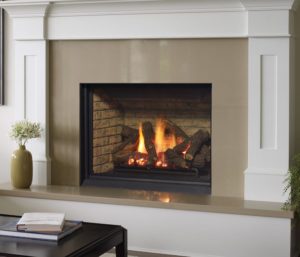When looking for a new Gas Fireplace Adelaide, you can come across a lot of words that are difficult to understand. Isn’t it just a fireplace? What is an insert, exactly? What does it mean to have a clear vent? What, above all, is the type of gas fireplace I require? Not to worry, keep reading until you break down the differences between types of a gas fireplace and, most important, highlighted differences to help yourself determine which one you’ll need.
Gas Fireplace
A gas fireplace is usually built into the wall as part of a major renovation or new construction project. Classic gas fireplaces are available in several types, including Traditional, Contemporary, and Modern. Still, they all fall into the same category of adding the warmth and comfort of a fireplace to every room in the house!
Gas Fireplace Insert
The fireplace is “inserted” into the current fireplace and vents up and out of the house through the chimney. Inserts are often used in home renovations to improve heating while preserving the original chimney. Gas Fireplace Inserts are a simple and convenient way to convert a draughty old wood masonry fireplace into a high-efficiency heater.
Gas Stoves
A gas stove fireplace is a freestanding stove that runs on gas. Instead of being incorporated into the wall like a gas fireplace, they are either placed inside a space or inside an existing masonry fireplace. Gas stoves have the appearance and sound of a conventional wood-burning stove but without the mess and effort! The comfort of gas is made possible by gas stoves.
- Venting Options:
Direct Vent
As part of an enclosed fireplace system, direct vent technology uses outside air for combustion and releases all pollution outside the house. Direct Vent increases heating efficiency while still improving indoor air quality. Direct vent technology is used in most Regency’s gas fireplace line-up because it provides the highest efficiency and overall comfort for homeowners. Direct vent fireplaces are a viable option.
Natural or B-Vent
Natural, or B-Vent, fireplaces draw air from inside the house for combustion and vent the exhaust outside. Natural vent fireplaces are not covered, unlike direct vent fireplaces. Without the use of electricity, natural vent fireplaces can be used safely.
Power Vent
Power Vent and Direct Vent systems are almost similar. As opposed to direct vent systems, power Vent systems use a fan to push air into the fireplace, while direct vent systems rely on a natural draught. Long-distance or unusual exhaust runs, such as those found in large open concept homes and commercial properties, benefit from power venting. Since power venting depends on electricity to operate the fan, it cannot be used in a power failure event.
Ventless
Ventless fireplaces use indoor air and emit pollution into the home, resulting in poor air quality and possible health risks.
However,
You can choose any type of Gas Fires Adelaide that suits your home the best but it should be efficient, durable and effective all at once.

